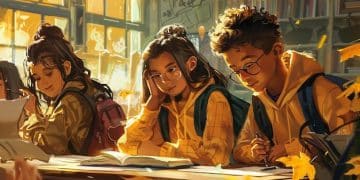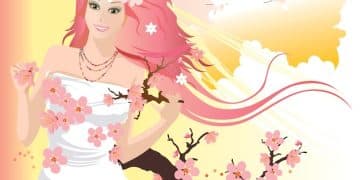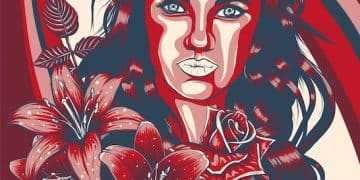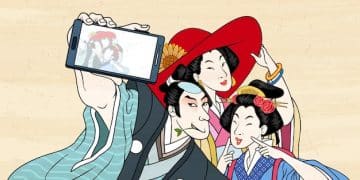Unveiling the Magic of Shojo Manga: A Comprehensive Review
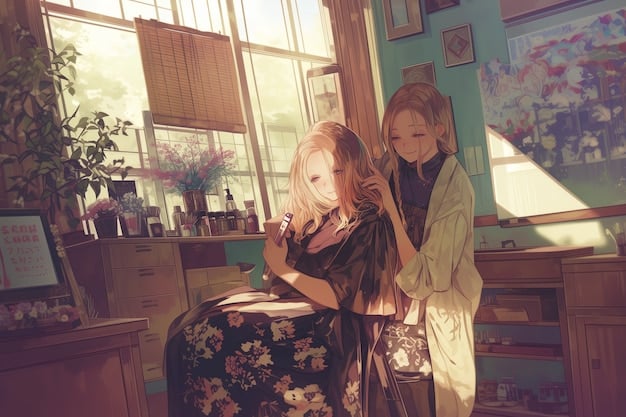
Shojo manga offers a captivating escape into worlds of romance, friendship, and self-discovery, primarily targeting a young female audience and characterized by its emotional depth and artistic expression.
Dive into the enchanting world of **shojo manga**, a captivating genre that has captured the hearts of readers worldwide with its focus on romance, personal growth, and heartfelt narratives designed for a young female audience.
What is Shojo Manga? A Gentle Introduction
Shojo manga, directly translated as “young girl’s manga,” is a genre tailored to appeal to a young female readership. However, its themes and art style often transcend demographic boundaries, attracting a diverse audience. But what makes it so unique?
It’s characterized by its emphasis on relationships, both romantic and platonic, and typically features expressive character designs, emotional storytelling, and themes centered around personal growth and self-discovery. Shojo manga often tackles relatable issues, providing a safe space for readers to explore complex emotions and navigate life’s challenges.
Key Elements of Shojo Manga
Several elements distinguish shojo manga from other genres. Understanding these can help you appreciate its unique charm and appeal.
- Character-Driven Narratives: Shojo manga prioritizes character development and relationships over plot-heavy storylines.
- Emotional Resonance: The genre is known for its ability to evoke strong emotions in readers, making them feel deeply connected to the characters and their experiences.
- Artistic Style: Shojo manga often features large, expressive eyes, elaborate hairstyles, and detailed backgrounds, enhancing the visual appeal and emotional impact of the story.
- Thematic Focus: Common themes include love, friendship, family, identity, and overcoming adversity, all explored through a female perspective.
Shojo manga creates immersive worlds where readers can connect with characters on a personal level, experiencing their joys and sorrows. Its focus on emotional depth and relatable themes makes it a beloved genre for many.
The Historical Roots of Shojo Manga
To truly understand shojo manga, it’s important to explore its origins. This genre has evolved significantly over time, shaped by cultural shifts and artistic innovations.
Early shojo manga emerged in the post-World War II era, initially influenced by male artists drawing for a female audience. However, female artists gradually entered the scene, bringing their unique perspectives and voices to the genre. Let’s explore this journey.
Early Pioneers: Pre-1970s
The earliest shojo manga were often simplistic and focused on traditional values. However, pioneering artists began to experiment with new styles and themes.
One notable figure is Machiko Hasegawa, whose work “Sazae-san” offered a humorous and heartwarming portrayal of family life in post-war Japan. While not strictly shojo, it paved the way for relatable, character-driven stories that resonated with female readers.
Other early contributors include artists like Miyako Maki, who introduced more romantic narratives and refined art styles that would become hallmarks of the genre.
The Revolutionary 1970s
The 1970s marked a turning point for shojo manga, with female artists taking the lead and introducing groundbreaking themes and styles.
Moto Hagio and Riyoko Ikeda, among others, created complex stories that tackled social issues, explored gender identity, and pushed the boundaries of visual expression. This era saw the emergence of genres like the “Year 24 Group,” a collective of female manga artists who revolutionized shojo manga with their innovative storytelling.
These artists introduced more nuanced characters, intricate plots, and a deeper exploration of emotions, setting the stage for the diverse range of shojo manga we see today.

Exploring Common Themes in Shojo Manga
Shojo manga is rich with diverse themes that resonate with its audience. These themes often reflect the experiences, aspirations, and challenges faced by young women.
From tales of first love to stories of self-discovery, shojo manga offers a wide array of narratives. Let’s delve into some of its most prevalent themes.
Love and Romance
Love is a central theme in shojo manga, often depicted in various forms, from innocent first crushes to complex, mature relationships.
These stories explore the joys and challenges of love, including themes of unrequited love, forbidden romance, and the power of connection. Many shojo manga series focus on the emotional journey of characters as they navigate their feelings and relationships.
Notable examples include “Fruits Basket” by Natsuki Takaya, which explores themes of love, acceptance, and healing through the lens of a supernatural romance, and “Kimi ni Todoke” by Karuho Shiina, a heartwarming story about a shy girl finding love and friendship.
Friendship and Loyalty
Friendship is another important theme in shojo manga, often portrayed as a source of strength and support in the face of adversity.
These stories emphasize the importance of loyalty, trust, and camaraderie. Friendships in shojo manga are often depicted as deep and meaningful, providing characters with a sense of belonging and purpose.
- “Skip Beat!” by Yoshiki Nakamura: Follows a determined girl who seeks revenge on her childhood friend turned pop idol, finding unexpected friendships along the way.
- “Ouran High School Host Club” by Bisco Hatori: Centers on a scholarship student who joins a host club, forming unique bonds with its members.
- “Lovely Complex” by Aya Nakahara: Depicts the humorous and heartwarming friendship between a tall girl and a short boy who navigate their height difference and romantic feelings.
Through these narratives, shojo manga highlights the enduring power of friendship and its impact on personal growth.
Iconic Shojo Manga Series: A Closer Look
Over the years, numerous shojo manga series have achieved iconic status, captivating readers with their compelling stories and memorable characters.
These series have not only influenced the genre but have also left a lasting impact on popular culture. Let’s explore a few standout examples.
“Sailor Moon” by Naoko Takeuchi
“Sailor Moon” is a magical girl series that follows the adventures of Usagi Tsukino, a clumsy teenager who discovers she is destined to become a powerful superheroine.
With its themes of love, justice, and friendship, “Sailor Moon” resonated with audiences worldwide, becoming a global phenomenon. The series is celebrated for its empowering female characters, vibrant art style, and engaging storyline. The series’ themes of teamwork, self-acceptance, and fighting for what’s right made it a beloved classic.
“Cardcaptor Sakura” by CLAMP
“Cardcaptor Sakura” tells the story of Sakura Kinomoto, a young girl who accidentally releases a set of magical cards and must recapture them before they cause chaos.
Created by the acclaimed manga collective CLAMP, this series is known for its intricately designed characters, whimsical storylines, and themes of love, loss, and the power of friendship. “Cardcaptor Sakura” is cherished for its gentle storytelling and its exploration of complex emotions through a childlike perspective.
“Yona of the Dawn” by Mizuho Kusanagi
“Yona of the Dawn” is a fantasy adventure series set in a kingdom inspired by ancient Korea. It follows Yona, a princess who is forced to flee her home after a coup d’état.
As Yona embarks on a journey to reclaim her throne, she discovers her own strength and forms alliances with powerful warriors. The series stands out for its strong female lead, intricate world-building, and compelling themes of survival, resilience, and the quest for justice.
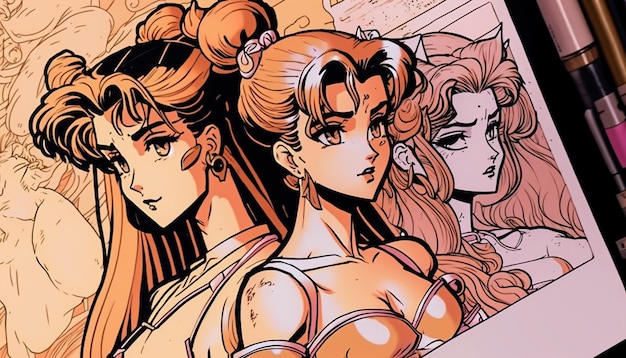
The Global Impact of Shojo Manga
Shojo manga has had a profound impact on global culture, influencing art, fashion, and entertainment industries worldwide.
Its themes and visual styles have resonated with audiences across borders, leading to its widespread popularity and adaptation into anime, live-action dramas, and other media.
Influence on Anime and Media
Many successful anime series are adaptations of popular shojo manga, bringing these stories to life through animation. Shojo themes and visual styles have also influenced other genres, contributing to the overall diversity of anime.
- Visual Style: The expressive eyes, elaborate hairstyles, and romantic settings of shojo manga have become iconic elements in anime.
- Thematic Depth: Shojo manga’s focus on emotions, relationships, and personal growth has enriched anime narratives, providing depth and resonance.
- Cross-Cultural Appeal: Shojo-inspired anime series have gained international acclaim, attracting a wide audience and contributing to the global popularity of Japanese animation.
Shojo manga has paved the way for many anime series, bringing these stories to life for audiences worldwide.
Cultural Exchange and Fandom
The global popularity of shojo manga has fostered cultural exchange and created a sense of community among fans worldwide. Online forums, fan conventions, and social media platforms provide spaces for fans to connect, share their passion for the genre, and engage in creative activities.
Cosplay, fan art, and fan fiction are common forms of expression within the shojo manga fandom, allowing fans to immerse themselves in the world of their favorite series and create their own interpretations of the characters and stories.
Through its ability to transcend cultural boundaries, shojo manga has brought people together and created a global community of fans who share a love for its captivating stories and heartfelt themes.
Tips for Discovering New Shojo Manga
With the vast array of shojo manga available, finding new series to enjoy can be both exciting and overwhelming. Here are a few tips to help you discover hidden gems.
From exploring different subgenres to seeking recommendations from fellow fans, there are many ways to broaden your shojo manga horizons. Let’s explore some effective strategies.
Explore Different Subgenres
Shojo manga encompasses a wide range of subgenres, each catering to different tastes and interests. Exploring these subgenres can help you narrow down your search and discover new series.
Some popular subgenres include:
- Magical Girl: Features heroines with magical powers who fight evil and protect the innocent.
- Historical: Set in historical periods, offering a glimpse into different cultures and eras through the lens of romance and adventure.
- School Life: Focuses on the everyday lives of students, exploring themes of friendship, romance, and personal growth within a school setting.
- Fantasy: Incorporates magical elements, mythical creatures, and fantastical worlds, offering imaginative and immersive narratives.
By exploring different subgenres, you can discover series that align with your specific preferences and interests.
Seek Recommendations from Fellow Fans
One of the best ways to discover new shojo manga is to seek recommendations from fellow fans. Online forums, social media groups, and manga communities are great places to connect with like-minded readers and exchange suggestions.
Engaging in discussions, reading reviews, and asking for recommendations can help you uncover hidden gems and find series that you might not have discovered otherwise. Personal recommendations often provide valuable insights into a series’ strengths and appeal, making it easier to decide whether it’s worth exploring.
| Key Aspect | Brief Description |
|---|---|
| 💖 Romance | Central theme, exploring love in various forms. |
| 🤝 Friendship | Emphasizes loyalty and support among characters. |
| 🌱 Personal Growth | Characters evolve, facing challenges and changes. |
| ✨ Artistic Style | Features expressive characters and detailed backgrounds. |
Frequently Asked Questions About Shojo Manga
▼
Shojo manga primarily targets young female readers, typically between the ages of 10 and 18. However, its themes often resonate with older audiences as well.
▼
Common themes include love, friendship, personal growth, family, and overcoming adversity. These themes are often explored through a female perspective.
▼
Shojo manga differs by emphasizing character-driven narratives, emotional resonance, and artistic style. It often features expressive characters and detailed backgrounds.
▼
“Sailor Moon” by Naoko Takeuchi, “Cardcaptor Sakura” by CLAMP, and “Yona of the Dawn” by Mizuho Kusanagi are standout examples in the genre.
▼
You can find and read it on various online platforms, such as Crunchyroll, Viz Media, and Manga Plus, which offer a wide selection of series.
Conclusion
Exploring the world of **shojo manga** reveals a rich tapestry of stories that resonate with readers of all ages. Its focus on heartfelt narratives, relatable characters, and artistic expression makes it a genre that continues to captivate and inspire.
